How to Improve LLM Visibility and Got Paid user Referred by ChatGPT?
Hi, it’s Kevin. I’m working hard to build the best Tweet screenshot tool.
This is a fascinating journey.
If you want to know how to improve your LLM visibility beyond routine marketing and SEO efforts, all you need is reading this article.
Let me tell you how a free Twitter-screenshot tool went from zero to getting its first paying customer from ChatGPT— and thanks to ChatGPT.
When I wake up one day and discover that AI bots are constantly @ mentioning you and recommending your product.
And when I got my first paying customer from a ChatGPT conversation link, I realized that LLMO or SEO optimizations might actually be helping you gain more traffic.
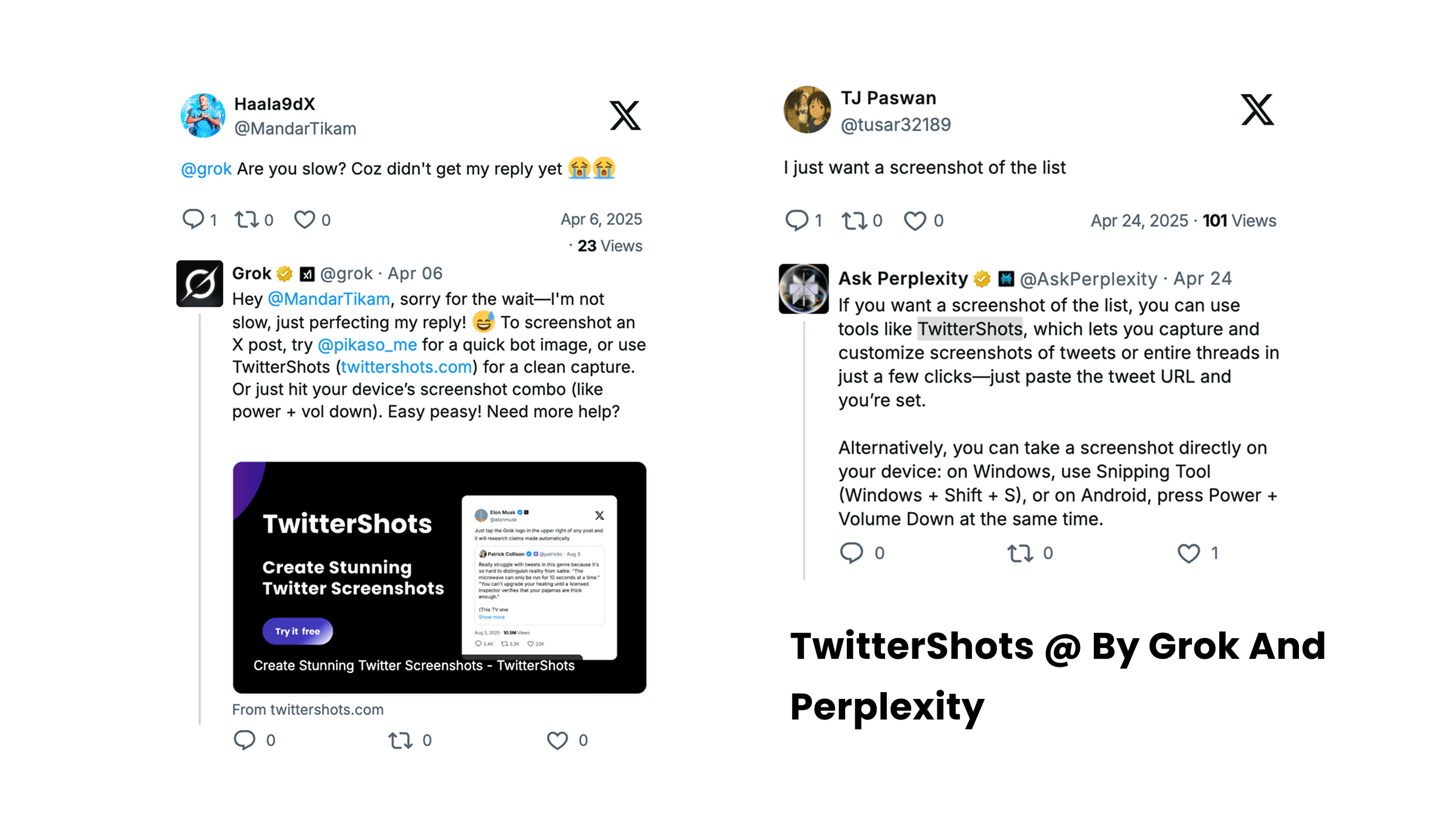
You can check all the TwitterShots citations from Grok and Perplexity in below 2 links :
This isn't some distant future scenario. It's happening right now.
You may not believe this ChatGPT refers 10% new Vercel signup, and it's growing very fast.

ChatGPT is #39 most visited sites in the world, by Ahrefs organic search traffic.
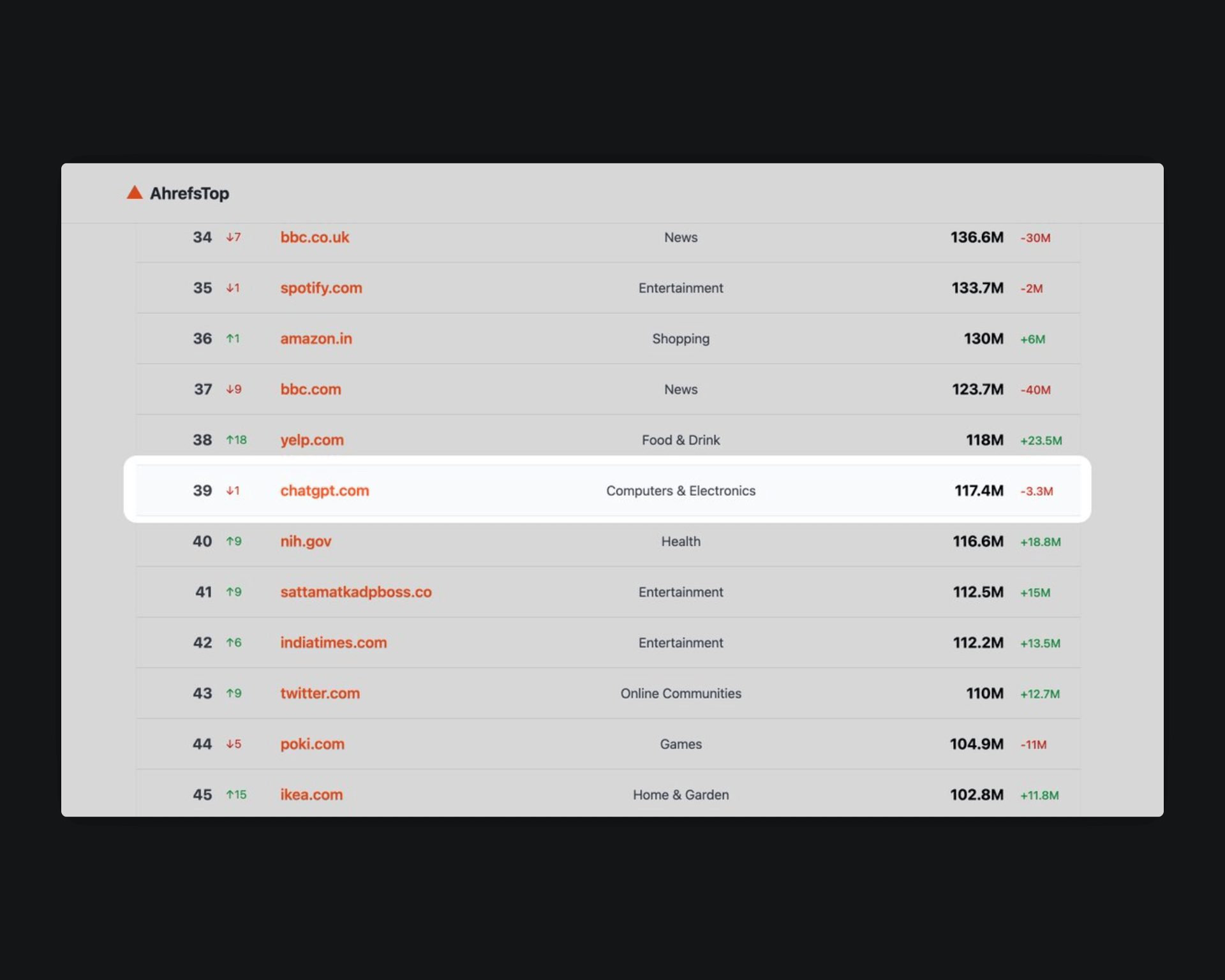
Another fact you might not know: Stack Overflow Is Almost Dead!
You can see Stack Overflow's traffic has been decline sharply while ChatGPT climbed into the top 50 most visited sites.
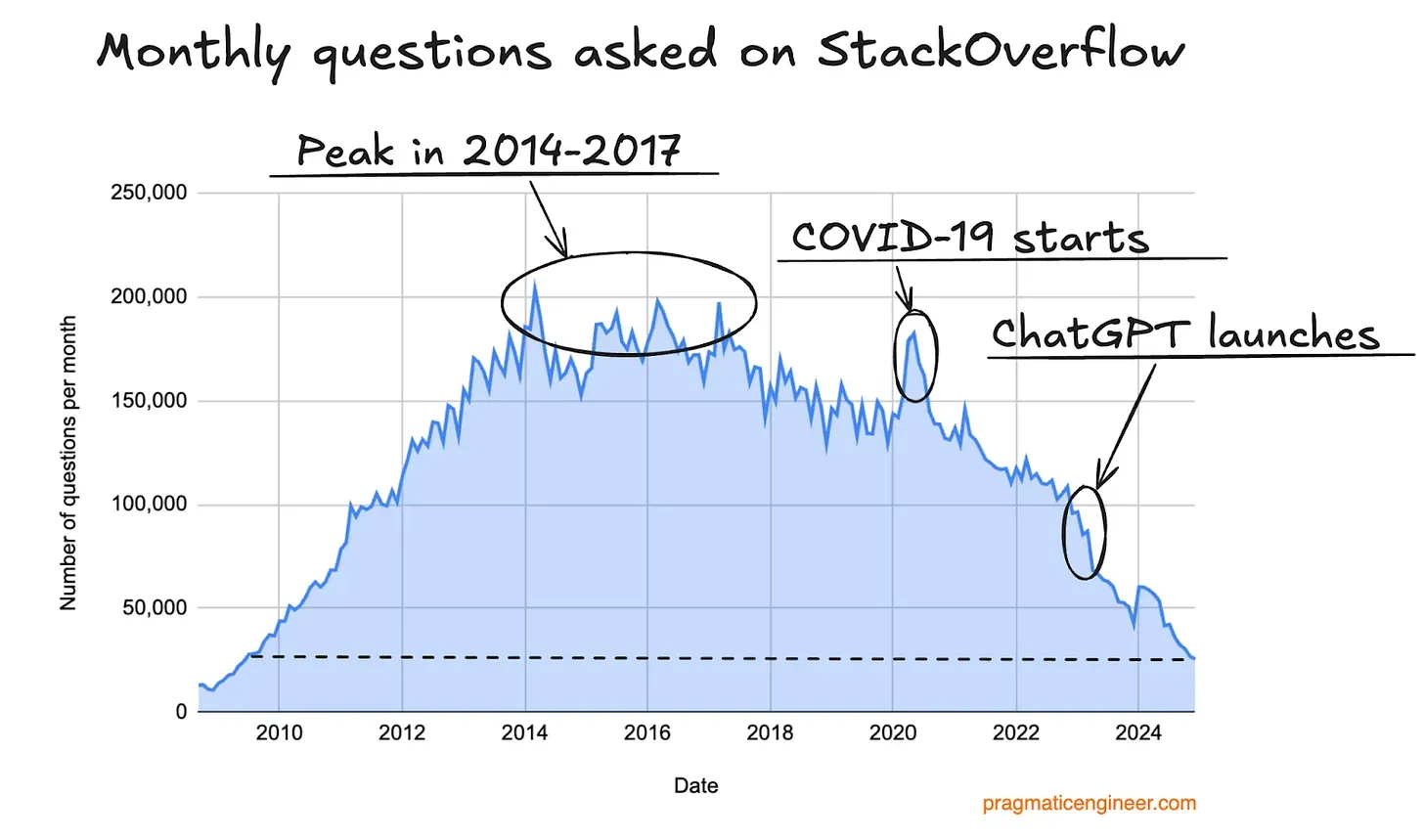
When I realized that users can get direct answers from AI.
Why would they click through website from Google? My site need some changes.
What is GEO/LLMO and Why It Matters
GEO (Generative Engine Optimization) or LLMO (Large Language Models Optimization) is about optimizing your content to show up in AI-generated answers. It's about getting your brand mentioned when ChatGPT, Claude, or Perplexity responds to user queries.
Why does it start to matter
People now open an AI chatbot first instead of hitting search box.
The difference:
-
SEO: focuses on helping websites rank higher in search engines like Google to attract more clicks.
-
GEO: focuses on increasing your brand’s visibility in AI-generated answers—making sure you’re part of the conversation.
The responses also different:
-
SEO give list of ranked links.
-
But in GEO AI is direct, summarized answers.
AI doesn't just help you find information—it gives you the answer directly. No more filtering and reranking through search results.
You can also see the growth in the number of unique domains that received referral traffic from ChatGPT over time.
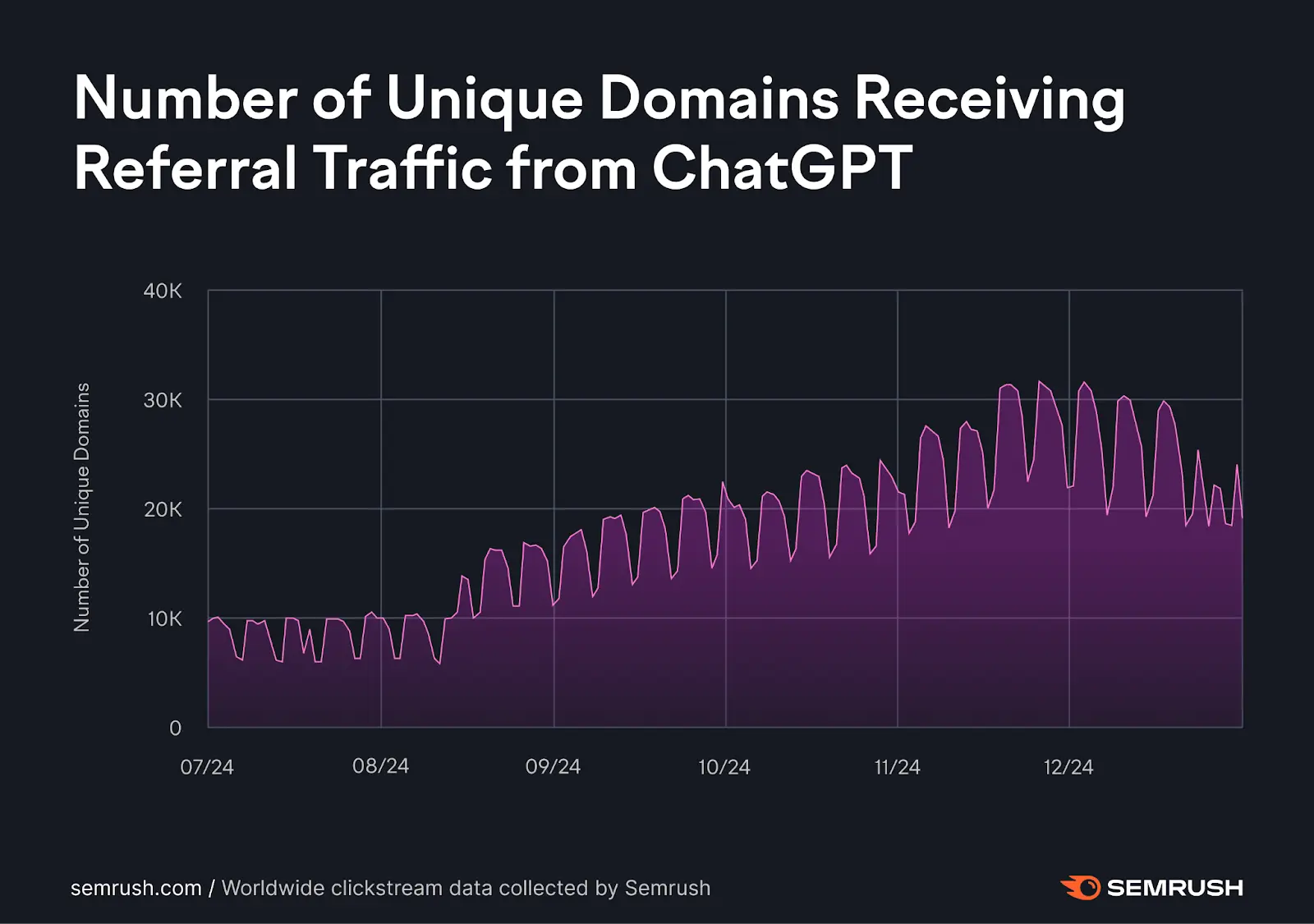
Source: Investigating ChatGPT Search: Insights from 80 Million Clickstream Records - Semrush
This changes everything about how we think about digital marketing.
We used to optimize for rankings and clicks. Now we need to optimize for mentions and trust.
How Large Language Models Actually "Think"
Understanding how LLMs work isn't hard but necessary—it's the key to getting them to mention your brand.
It's All About Probability
LLMs don’t “think” like us. They are just super-big guessing machines.
When you ask ChatGPT something, it’s playing a giant fill-in-the-blank game, picking the next word that fits best based on patterns it saw in billions of texts when people training them.
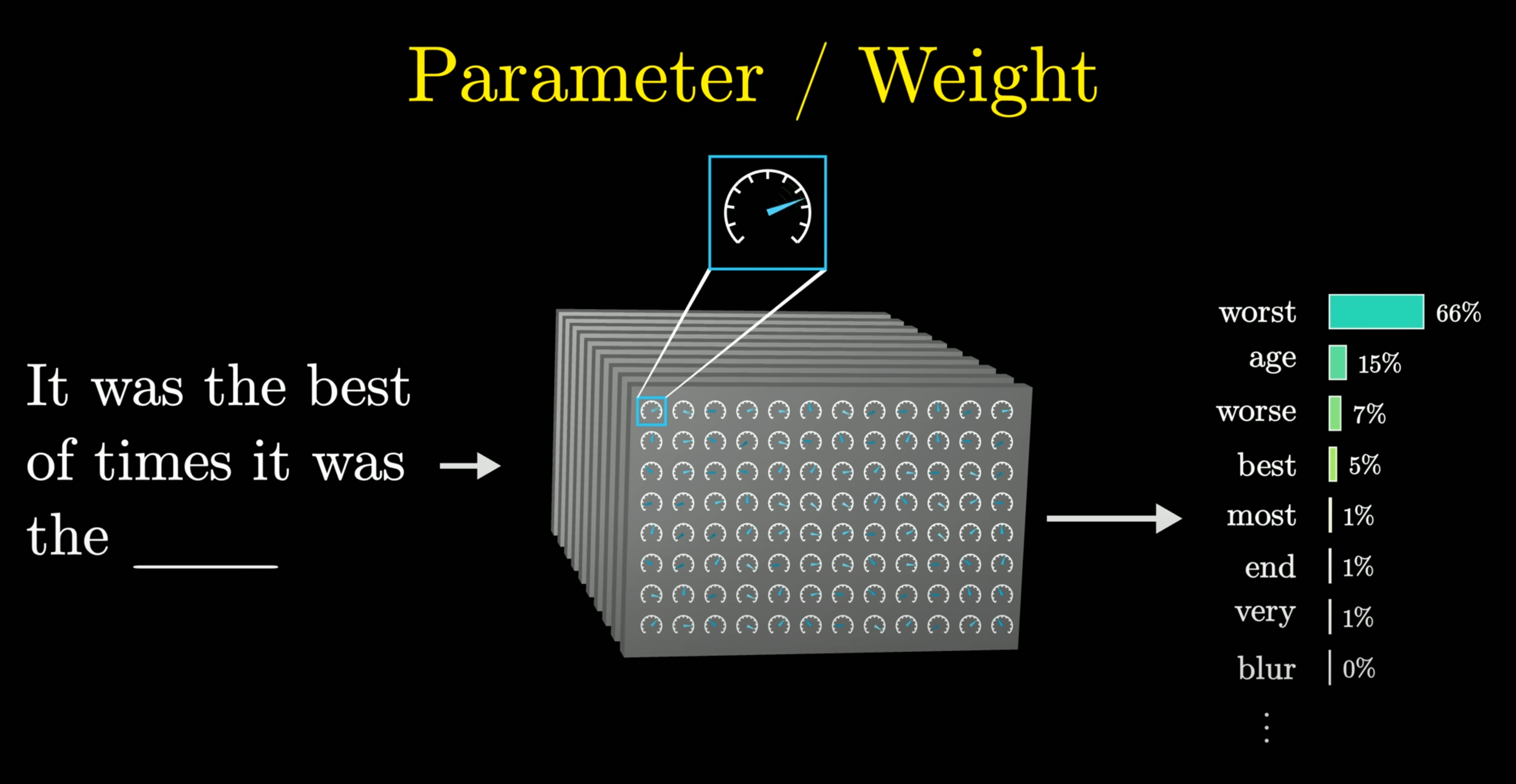
Source: How Large Language Models Work - 3Blue1Brown
The Transformer Architecture
Modern LLMs use something called the Transformer architecture. Here's what matters for LLMO:
Attention: the model can look at many parts of the text at once. So messy, keyword-stuffed stuff fails—keep it tidy and logical..
Context Windows: LLMs have limited memory. If your key information is buried deep in a long document, it might get ignored. Put important stuff up front.
Token Efficiency: LLMs process text in chunks called tokens. Dense, information-rich content performs better than empty marketing speak.
The Rise of LLMO: Getting Your product mentioned
That's the core problem LLMO solves. When ChatGPT becomes the new gatekeeper of information, the real question becomes: "Will the AI mention you in its answer?" your product don’t wait to be “found” by people— they only need to be “visible” by the AI chatbot.
The Direct Approach
My first thought was: just throw our data into the LLM training data set.
But truth is, we don't know the source of its training data, and we don't know if it will crawl the data we prepared next time.
Context Learning: The Practical LLMO Strategy
Most AI chatbots today plug into a search tool—when you ask, they jump online, grab fresh pages, and feed back into their own “brain” as extra context.
This is my go-to approach: carefully crafted prompts and examples that guide AI reasoning in real-time.
Here's how it works in practice:
Practical Tips:
1. Good SEO do not mean good visibility in AI chatbot
This is very important to know classic SEO metrics don't strongly influence AI Chatbot citations.
But if you structure content welll, AI models love structure and clarity content.
Use clear formatting:
- Use simple, direct language.
- Hierarchical headings (H1, H2, H3).
- Bullet points for lists.
- Short, factual statements.
And high recommend
- Don’t block AI bots in your robots.txt.
- Ensure fast page loading speeds.
- Make your site mobile-friendly.
2. Make Content AI-Friendly
-
Clear structure structure content to be easily understood and cognitive by AI systems.
-
Facts over adjectives, one solid citation beats ten loud ads.
-
Structured data: drawing maps for AI
Make it good for AI view and citation, some good examples from my practical experiences:
- Add llms.txt for llms
- Use markdown large model ready format for easy use
- More curl is friendlier to large models than clicking a button in your API page
3. Build a Standard Q&A Library
Prepare concise, accurate answers to the most common questions in your space. This becomes your context foundation, also for ai.
4. Test Everything
Different prompts yield completely different results.
Use AI chatbots to test different prompts and see the search citation sources from AI chatbots.
Based on these questions, publish your article content on the corresponding platforms.
Just like we used to watch Google algorithm updates, now we watch AI "moods."
5. Domain Rating (DR)
If you’re choosing between two sites with similar AI citations, DR Still a solid measure of trustworthiness and popularity.
It’s the number right next to AI Citations in Site Explorer.
For example, TwitterShots be trusted by Mixpanel, bring +10 DR after be added on Mixpanel blog site, be trusted is a very good proof.
So increase your DR, the best way is get more high dr dofollow from site and got trusted is very important.
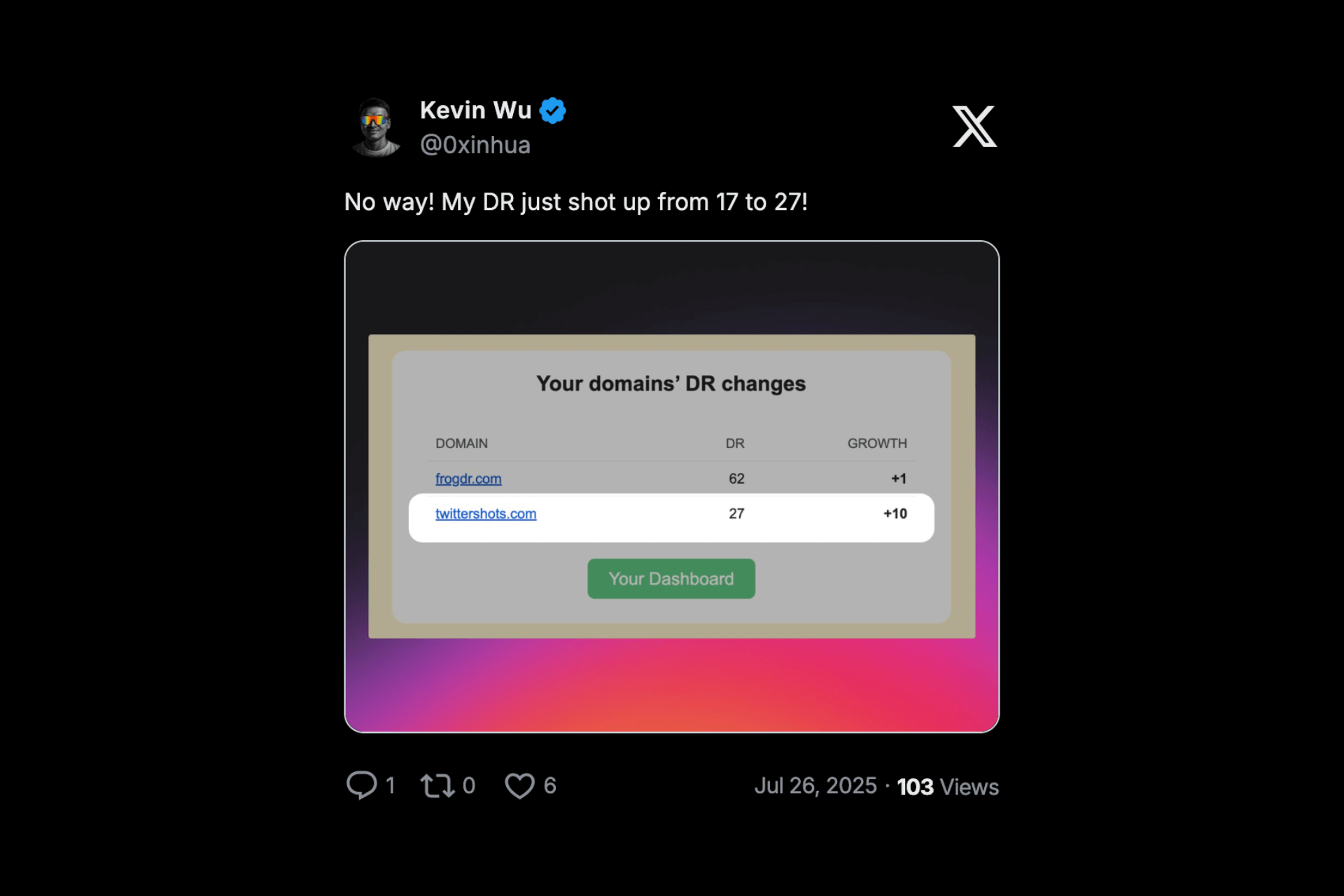
6. Certain content for AI's preferred
Based on ahref analysis, certain content types consistently earn the greatest proportion of AI traffic, like "best", "Top"...
“Best” content: 7.06% of AI traffic goes to pages with “best” in the title.
“Top” lists: 5.5% of AI traffic.
“Vs” comparisons: 4.88% of AI traffic.
How-to guides: 6.35% of AI traffic.
Product-focused pages: “Contact” (6.8%), “products” (6.43%), “product” (4.71%), and “services” (4.53%) pages.
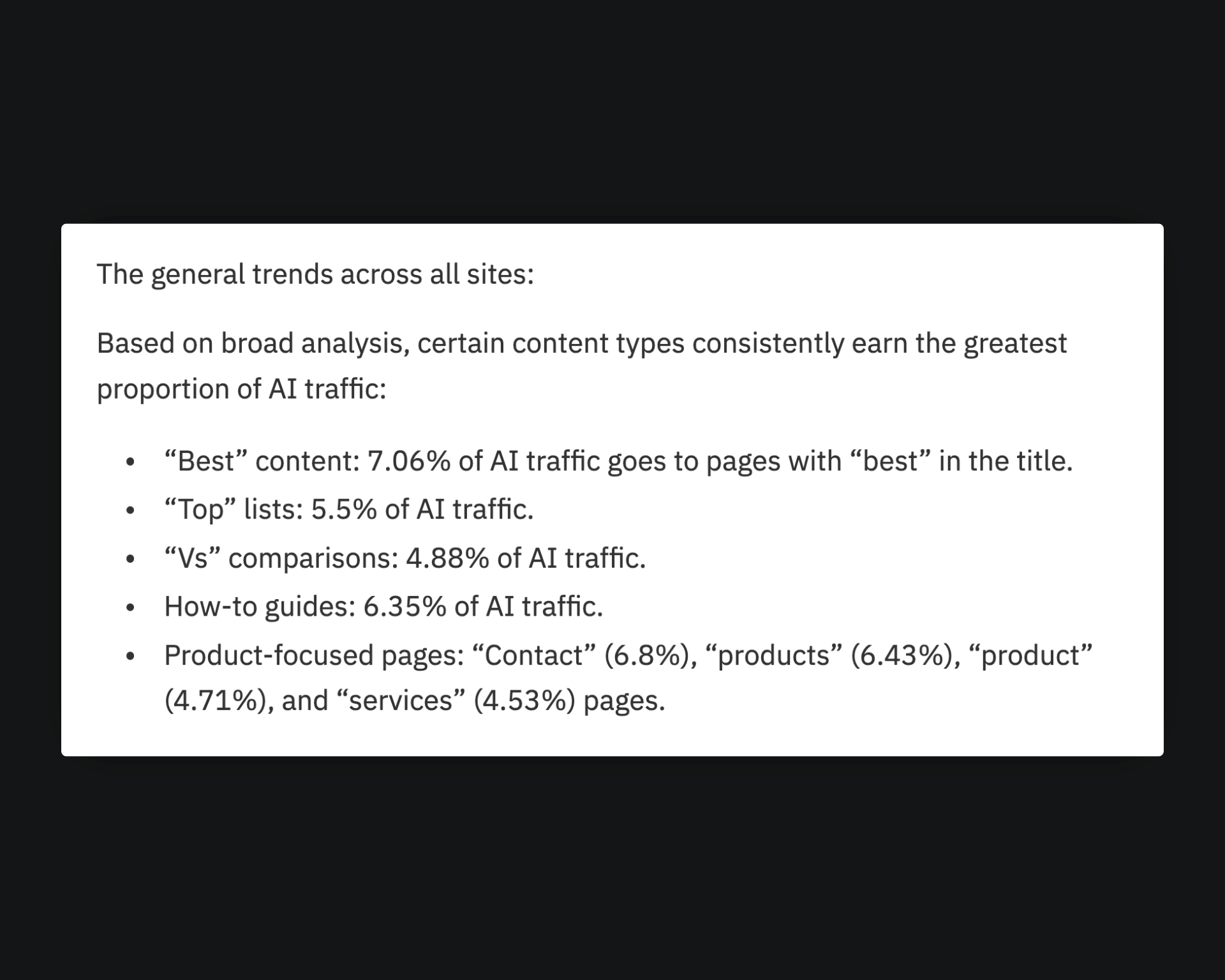
Source: Generative Engine Optimization: Growth Strategies and Metrics For the AI Era - ahref
The Bottom Line
LLMO is still young.
LLMO is hard.
No quick hacks.
There are no playbooks or best practices yet. But I'm certain of one thing:
If I start preparing now will have a massive advantage in the AI era.
After all, future users probably won't "search"—they'll just "ask."
And how you want AI to answer questions with your Product, You need to start preparing that now.
Rewrite the content of how you think about content, data, and talking to machines.
Start with small:
- Make your site easy for LLMs to crawl and understand.
- Treat every page like a window for your AI buddies.
- More trusted, high-quality content worth citing
Each tiny step sets up the next citation.
Create Professional Tweet Screenshots
Generate high-quality tweet screenshots with custom themes. Perfect for social media, blogs, and newsletter. Get consistent, branded images instantly.
- High-Quality Screenshots
- Custom Theme Design
- Dark & Light Theme
- Bulk Processing
- Screenshot API